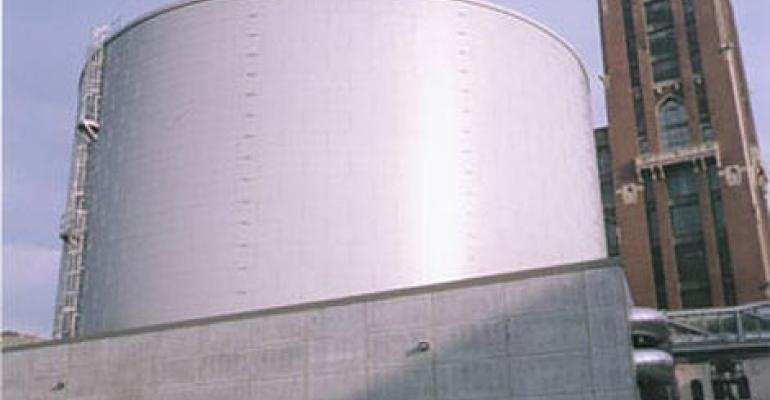Google has been a leader in adopting many strategies to improve data center energy efficiency. But that hasn't included thermal storage - until now. Google said today that it would use a thermal storage system for the first time in its new data center in Taiwan.
The Taiwan facility, set on 15 hectares of land in Changhua County, is one of three facilities announced by Google in September 2011 to boost the company's Internet infrastructure in the Asia Pacific region. Google says it expects to spedn $300 million on the Taiwan data center, which it hopes to bring online by the second half of 2013.
Thermal energy storage can reduce costs by allowing companies to run air conditioning systems at night, when power rates are cheaper. During daytime hours, when demand on the grid is higher and electricity is more expensive, these customers can tap the energy storage system, which serves as a “battery” that substitutes for the air conditioner. Thermal storage systems typically use ice or liquid coolant that can be chilled and then used in heat exchange systems.
“We’re very excited to be building this data center in Taiwan," said Lee-Feng Chien, Managing Director, Google Taiwan. "We’re working as fast as we can to start bringing it online by the second half of 2013, so we can keep up with the rapid growth in capacity demand across the region, and to hire the team of around 25 full time Googlers that will manage the facility when it’s fully operational.
“I’m also happy to be able to confirm that this will be one of the most efficient and environmentally friendly data centers in Asia," Chien continued. "Part of this will come from our nighttime cooling and thermal energy storage system - not a revolutionary idea, but the first of its kind in our global data center fleet. But we’re also custom designing each element of the facility - adapting for the local environment some of the design features our engineers have developed and continue to innovate on in our data centers around the world that have enabled us to use 50% less energy than typical facilities.”
Here’s a look at several existing thermal storage implementations in major data centers:
- At i/o Data Centers’ Phoenix ONE data center, the chillers cool a solution of water and 28 percent glycol. The thermal storage tank contains Cryogel ice balls, 4-inch polyethylene spheres filled with water. The balls freeze when the system is charging at night, and then cool the glycol solution during the day. The glycol solution is then pumped through a heat exchanger, which chills water in a separate loop used in the data center. The first phase of the system provides 12,000 ton hours of thermal storage. A second phase will eventually boost capacity to 24,000 ton hours.
- Digital Realty Trust’s carrier hotel at 350 East Cermak in Chicago is supported by a thermal storage system featuring an 8.5 million gallon tank of a refrigerated brine-like liquid. The huge tank also supports the Metropolitan Pier and Exposition Authority (MPEA), including the nearby McCormick Place Exposition Center and Hyatt Regency Hotel . The Trigen facility chills the liquid to 32 degrees and pumps it to the nearby buildings, which use it in a heat exchanger system to support their on-site cooling infrastructure. For Digital Realty, that includes a water-and-glycol system and enormous air handlers that deliver chilled air to tenants.
- The National Petascale Computing Facility (NPCF) at the University of Illinois, which will host the Blue Waters supercomputer, receives chilled water from the University chiller plant and also has outside thermal storage tanks that are cooled approximately 70 percent of the year by mother nature. This is expected to cut the chilled water costs for the facility by about $1 million per year.
- The National Oceanographic and Atmospheric Administration (NOAA) will bring a new data center online. The facility in Fairmont, West Virginia will support a 383-teraflop supercomputer designed to develop more powerful tools for analyzing the behavior of hurricanes. The NOAA facility is supported by a 32-foot tall thermal storage tank, which holds 25,000 gallons of water chilled at 55 degrees. At full load, the thermal storage will provide about 10 minutes of cooling in the event of a power outage to allow time to restart the chillers.





